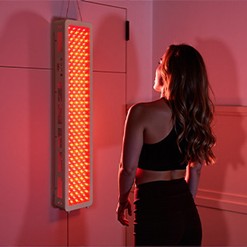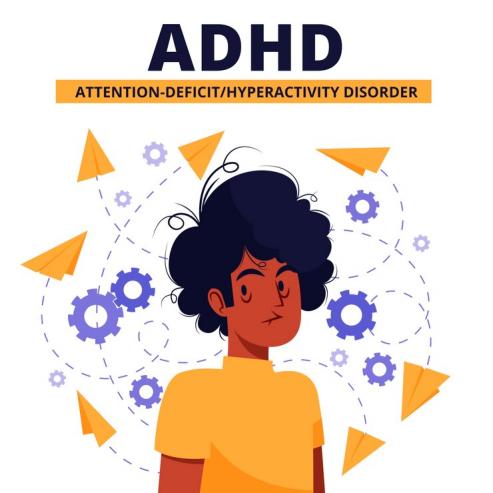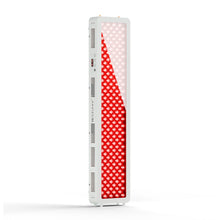Dealing with unsightly bruises can be a real pain, especially when you need to look your best or get back to your activities quickly. Red light therapy is gaining attention as a way to speed up bruise healing without medications or complicated treatments. This simple approach uses specific light wavelengths to boost your body's natural healing processes, potentially reducing bruise discoloration and tenderness faster than waiting it out. We'll cover how red light therapy affects bruise recovery at the cellular level and practical tips for using this treatment at home or from professionals.

How Does Red Light Therapy Help Heal Bruises?
When you get a bruise, your body starts healing itself naturally. Red light therapy might make this healing happen faster by working at the cellular level where the bruise forms.
How Red Light Works on Bruised Skin
Red light therapy uses specific red and near-infrared light (630-940nm) that can pass through your skin to reach damaged areas. This light boosts your cells' energy production centers (mitochondria), giving them more power to repair damage. The light also helps improve blood flow to the bruised area, which clears away damaged cells and brings in healing nutrients faster.
When You'll See Results
Most people notice improvements within 1-3 days after starting red light treatments. First, pain and swelling decrease, then the bruise's color starts to fade after 2-3 sessions. Overall, bruises treated with red light therapy typically heal 30-50% faster than untreated ones, though results depend on how bad the bruise is and the type of device you use.
What Happens in Your Body When Red Light Therapy Treats Bruises?
We've seen how red light therapy helps bruises heal, but what's actually happening inside your body during treatment? Red light doesn't just make healing faster—it triggers specific biological changes that help your body repair bruised tissue more effectively.
Red Light Makes Blood Vessels Expand
When red light reaches bruised tissue, it causes your blood vessels to temporarily widen. This increased circulation provides more oxygen and nutrients to the damaged area and helps to clear cellular waste and inflammatory chemicals.
Red Light Balances Inflammation Chemicals
Your immune system's inflammatory response after bruising is crucial but can sometimes get too excited. Red light therapy helps balance it out by restricting pro-inflammatory cytokines but increasing anti-inflammatory molecules. This more controlled inflammatory condition minimizes tissue damage and allows healing to proceed better.
Red Light Builds New Collagen
Besides increasing blood circulation, red light also activates specialized cells called fibroblasts that produce collagen—the protein that provides skin with its strength. More collagen production makes bruised tissues stronger and rebuilds them.
Red Light Creates New Blood Vessels
An additional dazzling benefit of red light therapy is its ability to induce angiogenesis—the development of new blood vessels. The new capillaries ensure improved long-term blood supply to bruising tissues that are healing. The improved vascular network helps continued healing much further along than the overtly visible bruise is eliminated.
Red Light Speeds Up Color Changes
The typical bruise transitions from purple-blue to green-yellow before it disappears completely—a process that typically takes 2-3 weeks. With daily red light therapy, this visible recovery typically occurs 30-50% earlier.
Red Light Reduces Pain Quickly
Red light therapy provides significant pain relief by reducing swelling, decreasing pressure on nerve endings, and triggering your body's release of natural pain relievers. Most people report feeling less discomfort within hours of their first treatment, with pain levels typically decreasing by 30-40% compared to untreated bruises.
Red light therapy transforms bruise healing by addressing multiple aspects of the recovery process simultaneously. The combined effects of improved circulation, balanced inflammation, enhanced tissue repair, and pain reduction cut total healing time nearly in half. Most bruises treated with red light therapy heal completely in 7-10 days instead of the usual 14-21 days, especially when treatment begins promptly after injury.

How to Use Red Light Therapy Correctly for Bruise Treatment
Now that we understand the benefits of red light therapy for bruises, let's explore how to use this treatment most effectively. Getting the best results depends on using the right settings, following proper treatment guidelines, and knowing when professional medical care might be needed instead.
Device Settings You Need
The right settings make a big difference in how well the treatment works:
lLight settings: Your device should offer red light and near-infrared light options
lTreatment length: Keep each session between 10-20 minutes per bruised area
lDistance: Hold the device 6 inches away from your skin
lPower level: Most devices will show this - aim for medium intensity
When to Do Your Treatments
Follow this simple schedule for the best healing:
lFirst few days: Do one treatment every day for 2-3 days after getting the bruise
lFollowing days: Switch to every other day until the bruise is gone
lImportant note: Clinical devices work faster than home devices, but both are effective
Safety First: Do's and Don'ts
Before you start your treatment, here's your quick safety checklist:
✅ Do's:
lStart with clean, bare skin
lKeep the treatment area still
lMaintain consistent device distance
lFollow manufacturer's guidelines
❌ Don'ts:
lDon't stare at the LED lights
lDon't apply over creams or oils
lDon't rush the treatment time
lDon't position the device too far away
When to See a Doctor Instead
Red light therapy works well for normal bruises, but some situations need professional medical help. Here's when you should skip the light therapy and see a doctor:
Serious Warning Signs:
lIf you find a bruise and can't remember how you got it, see your doctor to check what's causing it.
lGet medical help if your bruise keeps getting bigger instead of healing.
lVisit your doctor if your bruise hasn't started to fade after two weeks.
lSeek immediate medical care if your bruise is extremely painful or the area feels numb.
lGo to the doctor right away if you can't move the injured area normally.
Special Health Situations:
lIf you take blood thinners, talk to your doctor before trying red light therapy.
lPeople with bleeding disorders should get their doctor's approval first.
lAny bruises near your eyes need to be checked by a medical professional.
lSee a doctor if bruises are covering large parts of your body.
lIf you have a bruise and develop a fever, get medical help right away.
Red light therapy is a helpful tool for healing, but it's not a replacement for proper medical care. When in doubt about a bruise, it's always better to check with your doctor first. They can tell you if it's safe to use red light therapy or if you need other treatment.
Red Light vs. Traditional Methods: Which Bruise Treatment Works Better?
While proper application of red light therapy can speed bruise healing, it's important to understand how it compares to traditional treatments you might already use. Knowing the differences between red light therapy and conventional methods helps you make better choices about which treatments to use alone or in combination for the fastest recovery.
Benefits Compared to Cold Packs, Pressure, and Creams
Red light therapy provides unique benefits that standard bruise treatments cannot match. Unlike ice packs that only work during application, red light therapy triggers healing processes that continue working hours after your session ends. While arnica creams only affect the skin's surface, red light penetrates deeper to reach damaged blood vessels and tissues below. Additionally, red light therapy stimulates cellular energy production and collagen formation—biological processes that compression bandages and topical treatments simply cannot influence.
|
Treatment Feature |
Red Light Therapy |
Cold Packs |
Compression |
Topical Creams |
|
Depth of effect |
Deep tissue (1-5 cm) |
Surface to moderate |
Surface pressure only |
Skin surface only |
|
Duration of benefit |
Continues 12+ hours after treatment |
Works only during application |
Works only while applied |
Limited by absorption |
|
Cellular energy boost |
Yes - increases ATP production |
No |
No |
No |
|
Collagen stimulation |
Yes - up to 75% increase |
No |
No |
Minimal |
|
Healing time reduction |
~50% faster than no treatment |
~20-30% faster than no treatment |
Varies widely |
Minimal evidence |
|
Side effects |
None known |
Potential skin damage if overused |
Can restrict circulation if too tight |
Possible skin irritation |
|
Areas of use |
All body areas |
Limited on face, joints |
Difficult on face, joints |
All areas but absorption varies |
How to Use Red Light Together with Other Healing Methods
Red light therapy works best as part of a multimodal approach to bruise management, not alone. For acute bruises less than 48 hours old, start with initial short-duration cold therapy to reduce early bleeding and swelling, then continue with red light treatments to accelerate the healing process. This combined approach addresses different stages of healing for better overall results.
|
Combination Strategy |
Timing |
Expected Benefit |
|
Cold therapy + Red light |
Cold first 0-24 hours, then red light |
15-20% faster healing than either alone |
|
Compression + Red light |
Gentle compression between light treatments |
Better maintained circulation and reduced swelling |
|
Vitamin K cream + Red light |
Apply cream, then red light treatment |
Improved cream absorption and enhanced effectiveness |
|
Movement therapy + Red light |
Alternate gentle movement with light sessions |
Better outcomes for athletes than complete rest with therapy |
|
Elevation + Red light |
Elevate area during and between treatments |
Reduced swelling and improved circulation |
The ideal treatment for a bruise depends on the duration it has lasted. Right after you've been injured, icing over the bruise is ideal. Half a day to one day is when red light therapy is effective since your body starts to heal itself. Both of the treatments - icing first and red light - combined together heal your bruise in different manners. If you use both and not one type of treatment, your bruise will heal approximately twice as fast.
Try Red Light Therapy for Faster Bruise Healing Today
If you are a hurt athlete, a soft bruiser, or just want to recover faster from a knocked shin, red light therapy heals in half the time of conventional treatment without drug side effects. If you want to try this method, buy a good unit with the correct wavelengths, follow the treatment rules that we have specified, and pair it with initial icing for maximum effect. As with all things, listen to your body and seek the advice of a health expert for any severe injuries or bruising that aggravate, even at-home remedies.















 Small
Small

 Moderate
Moderate

 Moderate
Moderate

 Moderate
Moderate

 Full
Full



